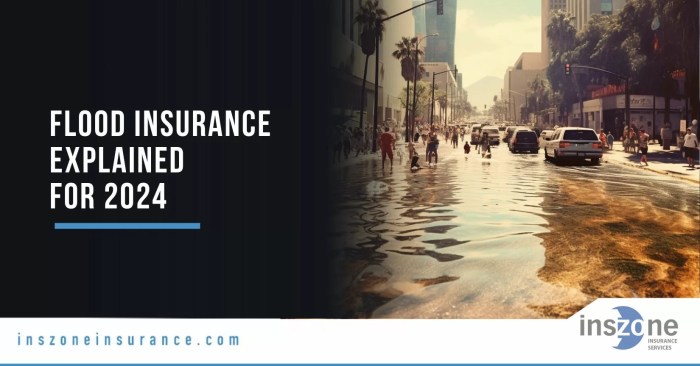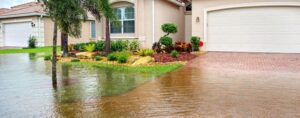
Flood insurance premium increases 2025 is a hot topic among homeowners and insurance holders, particularly in light of the growing concerns surrounding climate change and regulatory shifts. As we move into 2025, understanding the factors that drive these premium hikes becomes crucial for anyone looking to safeguard their property against flood risks.
The rising costs are not just isolated to flood insurance; they reflect broader trends impacting various types of insurance. By delving into what influences these premiums, including environmental changes and legislative updates, we equip ourselves to navigate the financial implications effectively.
Understanding Flood Insurance Premium Increases in 2025
As we approach 2025, many homeowners are bracing for significant increases in flood insurance premiums. These changes are driven by a combination of environmental, economic, and regulatory factors that are reshaping the landscape of flood risk and insurance. Understanding these elements is crucial for anyone looking to navigate the complexities of flood insurance in the coming years.The rise in flood insurance premiums is primarily influenced by several key factors.
Firstly, historical data shows an increase in the frequency and severity of flooding events, which insurers use to assess risk. Secondly, advancements in technology have led to improved flood risk modeling, allowing for more accurate assessments that can lead to higher premiums. Finally, the financial stability of insurance providers is also a consideration; as claims increase, providers may adjust premiums to maintain solvency.
Impact of Climate Change on Flood Insurance Pricing
Climate change is a significant and ongoing factor that influences flood insurance pricing models. As global temperatures rise, weather patterns become more erratic, resulting in increased rainfall and flooding in previously low-risk areas. This shifting risk profile necessitates a re-evaluation of flood zones and the associated insurance premiums. Insurers are adapting their pricing models to reflect these changes, which can lead to more substantial premium increases for homeowners situated in newly identified high-risk areas.This is being compounded by the following elements:
- Increased Storm Intensity: More powerful storms lead to greater flooding risks, prompting insurers to reassess their exposure.
- Changing Weather Patterns: Areas that were once considered safe from flood risks may now require coverage adjustments, impacting insurance costs.
- Regulatory Responses: Government initiatives aimed at mitigating climate impacts may influence insurance market dynamics.
The modeling of flood risks is becoming increasingly sophisticated, incorporating real-time data and predictive analytics to forecast potential flooding events. As these models evolve, they can lead to significant adjustments in insurance premiums, reflecting more accurately the potential for loss.
Regulatory Changes Affecting Flood Insurance Policies
Regulatory changes in flood insurance policies are also playing a crucial role in shaping premium increases for 2025. The National Flood Insurance Program (NFIP) has undergone reforms aimed at reducing the financial burden on taxpayers and making the program more sustainable. These changes include updates to how flood risks are assessed and how premiums are calculated.Key regulatory shifts include:
- Risk Rating 2.0: This new approach to risk assessment focuses on a property’s specific flood risk rather than relying on outdated flood zone maps, resulting in premium adjustments.
- Phase-Out of Subsidies: Over the coming years, subsidies for certain properties that have historically had lower premiums will be gradually eliminated, leading to sharp increases for some homeowners.
- Incentives for Mitigation: New regulations may provide incentives for property owners to invest in flood mitigation measures, which could influence insurance pricing structures.
Overall, these regulatory adjustments aim to create a more equitable system but can lead to increased costs for many homeowners as the true risk of flooding is more accurately reflected in the premiums charged.
Comparisons with Other Insurance Types
Understanding how flood insurance premiums stack up against other forms of insurance like dental and health insurance provides valuable insights for consumers. The landscape of insurance is multifaceted, with varying factors influencing the cost and coverage of different types of policies. In 2025, flood insurance continues to evolve, prompting a closer look at its premium structure compared to other insurance categories.
Flood Insurance vs. Dental Insurance Premiums
Flood insurance premiums are generally higher than dental insurance premiums. This disparity arises from differing coverage scopes and risk assessments. Flood insurance protects against natural disasters, a significant and often unpredictable risk, while dental insurance focuses on routine preventive care and specific dental procedures.
- Average flood insurance premiums in 2025 are estimated to reach around $1,800 annually, depending on the property’s risk and location.
- In contrast, average dental insurance premiums are typically between $300 and $600 per year, focusing on regular checkups, cleanings, and basic procedures.
- The stark difference in costs reflects the potential financial impact of natural disasters compared to dental issues, which, while important, usually do not carry the same level of financial risk.
Flood insurance responds to catastrophic events where losses can be extensive, while dental insurance covers more manageable, routine care.
Coverage Differences: Flood Insurance vs. Health Insurance
Flood insurance and health insurance serve distinctly different purposes, influencing their pricing trends. Flood insurance covers damage to property from flooding, often with limited payouts determined by specific flood events. Health insurance, on the other hand, encompasses a broad spectrum of medical care, from preventive services to emergency treatments.
- The average health insurance premium for an individual in 2025 is approximately $7,300 annually, significantly higher than flood insurance but justified by the range of services covered, such as hospital stays and outpatient care.
- In contrast, flood insurance typically offers limited coverage—often capping payouts for structural damage and personal property at specific amounts defined by FEMA guidelines.
- Health insurance premiums have been steadily increasing due to rising healthcare costs, while flood insurance premiums are adjusting in response to climate change and increased flooding events.
While flood insurance aims to address property loss, health insurance is designed to safeguard against medical expenses, making their cost structures inherently different.
Disability Insurance Costs and Flood Insurance Premium Increases
The relationship between disability insurance costs and flood insurance premium increases can reveal important trends in risk management. Disability insurance provides income replacement for individuals unable to work due to health-related issues, while flood insurance is reactive to environmental risks.
- In recent years, the cost of disability insurance has seen a gradual increase, with average premiums ranging from $300 to $1,500 annually, depending on coverage amounts and individual risk factors.
- As flood insurance premiums rise due to increased claims from climate-related events, there may be a ripple effect on disability insurance premiums as insurers reassess risk and adjust their pricing models across the board.
- The interconnectedness of these insurance types underscores the importance of comprehensive risk management in personal finance, especially for individuals living in high-risk flood areas.
Increased flood insurance premiums may prompt insurers to adjust disability insurance rates, reflecting the broader impact of environmental risks on financial products.
Preparing for Future Insurance Changes

As flood insurance premiums are expected to rise significantly in the coming years, homeowners must take proactive steps to manage these increasing costs. Being prepared not only helps mitigate the financial burden but also ensures that homeowners maintain adequate coverage in the face of changing circumstances. By understanding their current policies and strategizing for the future, homeowners can safeguard their investments against the unpredictable nature of flooding events.One effective way to prepare for rising flood insurance costs is to evaluate and understand existing insurance policies in detail.
This involves reviewing coverage limits, deductibles, and the terms of the policy to identify areas where adjustments can be made. Homeowners should also stay informed on changes in the National Flood Insurance Program (NFIP) and local regulations, as these can directly influence premiums.
Methods for Evaluating Current Insurance Policies
An effective review of insurance policies can help homeowners identify potential savings and ensure adequate coverage. The following checklist serves as a guide for evaluating existing flood insurance policies:
- Review the policy declaration page to confirm coverage limits and deductibles.
- Check if the policy covers rebuilding at current market rates to avoid underinsurance.
- Assess if the property is in a flood zone and how that impacts rates.
- Compare the existing policy with other available flood insurance options for better pricing.
- Keep an eye on any endorsements or exclusions that could affect claims.
- Consult with a licensed insurance agent to clarify any confusing terms or conditions.
Staying proactive and informed can aid homeowners in making necessary adjustments to their flood insurance coverage, especially as premium rates continue to rise.
Strategies for Bundling Insurance
Bundling flood insurance with other types of insurance can be a smart financial move. Insurance companies often provide discounts for customers who combine multiple policies, which can help mitigate overall costs. Here are effective strategies for bundling insurance:
- Consider combining flood insurance with homeowner’s insurance for a potential discount.
- Look into policies that offer bundled coverage for auto, life, or umbrella insurance.
- Negotiate with insurance providers to explore personalized bundling packages based on individual needs.
- Evaluate the coverage offered in bundled packages to ensure it meets all necessary requirements.
- Stay informed about any promotional offers or loyalty discounts that insurance companies may provide.
By leveraging the benefits of bundling, homeowners can not only save money but also streamline their insurance management, making it easier to manage multiple policies under one provider.
Effective insurance management today can lead to substantial savings tomorrow, particularly in the face of rising flood insurance premiums.
Last Word

In summary, the landscape of flood insurance is evolving rapidly, and the anticipated increases in premiums for 2025 are indicative of larger environmental and regulatory challenges. By staying informed and proactive, homeowners can better prepare for these changes and mitigate their financial burden, ensuring their properties remain well protected against flooding risks.
Question Bank
Why are flood insurance premiums rising in 2025?
The increase is primarily due to climate change impacts, regulatory updates, and rising historical claims.
How can homeowners prepare for these premium increases?
Homeowners can review their current policies, consider bundling insurance, and assess risk levels to prepare financially.
Will all homeowners see the same increase in flood insurance premiums?
No, the increase varies based on location, property risk, and individual policy factors.
Are there any government programs to assist with rising flood insurance costs?
Yes, there are federal disaster assistance programs and potential subsidies available for eligible homeowners.
How do flood insurance premiums compare to other types of insurance?
Flood insurance premiums typically reflect specific risks associated with flooding, differing significantly from health or dental insurance in terms of coverage and pricing.







